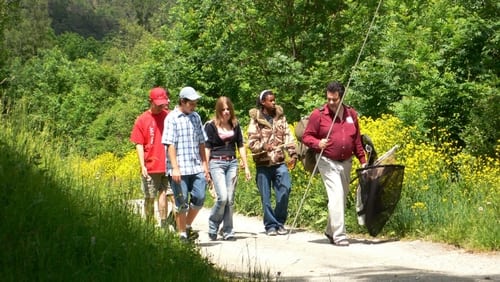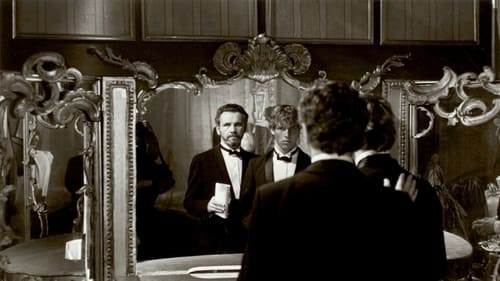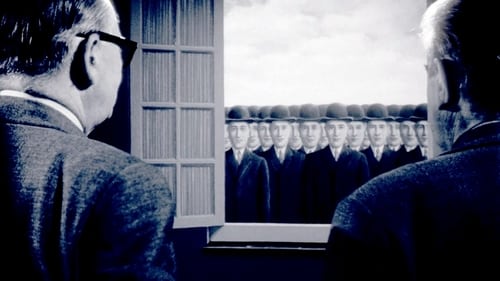Jacqueline Veuve
출생 : 1930-01-29, Payerne (Canton de Vaud)
사망 : 2013-04-18

Screenplay

Director

Screenplay

Director

Screenplay

Director

Elle-même

Screenplay

Director

Screenplay

Director

Writer

Director

Writer
Delphine Seyrig, an extraordinary woman and actress, died on October 15, 1990. From "Last Year at Marienbad" by Alain Resnais to "India Song" by Marguerite Duras, she played in 34 films for cinema, 13 films for television and 33 plays. Jacqueline Veuve, filmmaker and friend of Delphine Seyrig, wanted to break the silence that has fallen on her memory by making a documentary that traces with emotion and subjectivity the life of the mythical actress, the fierce feminist but also the simple friend.

Director
Delphine Seyrig, an extraordinary woman and actress, died on October 15, 1990. From "Last Year at Marienbad" by Alain Resnais to "India Song" by Marguerite Duras, she played in 34 films for cinema, 13 films for television and 33 plays. Jacqueline Veuve, filmmaker and friend of Delphine Seyrig, wanted to break the silence that has fallen on her memory by making a documentary that traces with emotion and subjectivity the life of the mythical actress, the fierce feminist but also the simple friend.

Script
This documentary show the work, the worries and the joys of a family dedicated to viticulture, the Potterat, living in Lavaux. Three generations live together, keeping the old traditions

Director
This documentary show the work, the worries and the joys of a family dedicated to viticulture, the Potterat, living in Lavaux. Three generations live together, keeping the old traditions

Director

Screenplay
This film deals with the issue of mandatory military service in Switzerland. For four months, from February to May 1990, filmmaker Jacqueline Veuve and her team filmed a platoon engaged in basic training at Colombier, Switzerland.

Director
This film deals with the issue of mandatory military service in Switzerland. For four months, from February to May 1990, filmmaker Jacqueline Veuve and her team filmed a platoon engaged in basic training at Colombier, Switzerland.

Director
Arnold Golay, 91, a former watchmaker who once had learned to make a timepiece entirely by hand. This know-how has always stood him in good stead. Upon retirement, Golay became a full-time toy maker. Even as a watchmaker, he used to make toys for his own children. The film follows his steps as he builds a toy hand-cart, from raw wood to finished product. We also see his collection of toys, which are reduced-scale models of all the carts, wheel barrows and other implements used on the farm before the invention of the tractor.

Director
A collection of woodworkers' portraits, among them carvers and coopers, roof tilers and toymakers.

Director
Cannes Festival 1991

Director
The shooting of this peasant chronicle in the Gruyère region of Switzerland lasted a whole year, from July 1989 to July 1990.

Director
The shooting of this peasant chronicle in the Gruyère region of Switzerland lasted a whole year, from July 1989 to July 1990. A year of work and festivities in the family of Conrad and Louise Bapst, their children and grandchildren who live in La Roche (canton of Fribourg). In summer, part of the family goes with the herd to the upper pastures, and will move six times in the next three months, as the grass for the cows grows in higher and higher places. At the farm below, the rest of the family mows the hay and the after crop, and tends the vegetable garden. Fall and winter bring new chores, along with feast-days, and the sale of cheeses to pay for rented pastures. We see the family participate in a vote for or against the Swiss Army, and at a meeting where mountain farmers discuss whether or not to join the European Union. The film displays the patient and human approach of an almost silent minority of Switzerland.

Director
The Bapst Brothers: Romain, Maurice and Jacques – whom we will also meet in The Gruyere Chronicle (produced in 1990) – are peasants and carriers and work with their father. In autumn and winter, they bid for the community’s wood, cut down the pine trees and bring down the logs through the snowy woods by horse-drawn sleigh.

Director
Long ago, there were no roads to the chalets in the high mountain pastures. All the material for a new chalet had to be carried up by man or mule, so the peasants who built and cared for these chalets used the nearest rocks available and found a way to extract the sand needed for cement right on the spot. They used to burn clods of earth for three days until all vegetable residue was burned away and only the minerals remained as pink sand. This custom slowly disappeared at the beginning of the 21st century. However, 83-year-old Henri Chillez remembers seeing his father doing this when he was ten. Thanks to him, we were able, in 1987, to reconstruct the operation and film each step needed to change earth into pink sand.

Maria
Film professor Michael falls in love with one of his students and is confronted with his pupil's father, with whom he had an affair over 15 years ago. This unexpected meeting abruptly overturns the lives of all the characters. When the tutor decides to undertake a planned trip to London, not with the son but with the father, he is once again forced to choose; this time between his wife and his friend.

Writer
A young Swiss drug addict (Jacques Zanetti) has been imprisoned for robbery, and must wait and wait for his upcoming trial, all the while isolated and without hope of parole - the police are convinced he is a dealer and not just a user. He hears from his son that his girlfriend has a new man, and begins to despair of ever coming to trial, or of having another relationship like the one he lost. This fiction film is said to be based on a true story.

Director
A young Swiss drug addict (Jacques Zanetti) has been imprisoned for robbery, and must wait and wait for his upcoming trial, all the while isolated and without hope of parole - the police are convinced he is a dealer and not just a user. He hears from his son that his girlfriend has a new man, and begins to despair of ever coming to trial, or of having another relationship like the one he lost. This fiction film is said to be based on a true story.

Producer
A tale, told by his five daughters, of the life and death of a man very representative of a Protestant Switzerland in the early 20th century where life was conditioned by the work ethic. He was first a farmer, then a factory worker, then the head of a small family affair where his daughters became his workers. The business grew into an large factory that would be eventually taken over by the only son. The five stories show us the family and professional context of the first half of the 20th century. They are also five different versions of the serene death of a man who felt he had done his duty. The film illustrates the ideas of Max Weber, known for their importance in understanding the Western civilization that emerged from the Reformation.

Screenplay
A tale, told by his five daughters, of the life and death of a man very representative of a Protestant Switzerland in the early 20th century where life was conditioned by the work ethic. He was first a farmer, then a factory worker, then the head of a small family affair where his daughters became his workers. The business grew into an large factory that would be eventually taken over by the only son. The five stories show us the family and professional context of the first half of the 20th century. They are also five different versions of the serene death of a man who felt he had done his duty. The film illustrates the ideas of Max Weber, known for their importance in understanding the Western civilization that emerged from the Reformation.

Director
A tale, told by his five daughters, of the life and death of a man very representative of a Protestant Switzerland in the early 20th century where life was conditioned by the work ethic. He was first a farmer, then a factory worker, then the head of a small family affair where his daughters became his workers. The business grew into an large factory that would be eventually taken over by the only son. The five stories show us the family and professional context of the first half of the 20th century. They are also five different versions of the serene death of a man who felt he had done his duty. The film illustrates the ideas of Max Weber, known for their importance in understanding the Western civilization that emerged from the Reformation.

Writer
An animated cartoon about the Creation myth reviewed and corrected by two women. God the magician has decided to create a paradise: Switzerland. He covers it with trees and cows, until Adam is born. After exploring his paradise, Adam creates Eve from one of his ribs. Man is shown as an erect penis, woman by a limbless trunk.

Director
An animated cartoon about the Creation myth reviewed and corrected by two women. God the magician has decided to create a paradise: Switzerland. He covers it with trees and cows, until Adam is born. After exploring his paradise, Adam creates Eve from one of his ribs. Man is shown as an erect penis, woman by a limbless trunk.

Script Supervisor
The surrealist painter René Magritte questions the objective reality and emphasizes the arbitrariness of the relationship between an object, its image and its name: the evocation of mystery consists of images of familiar things gathered or transformed in such a way that they no longer conform to our ideas, whether naive or wise.




















